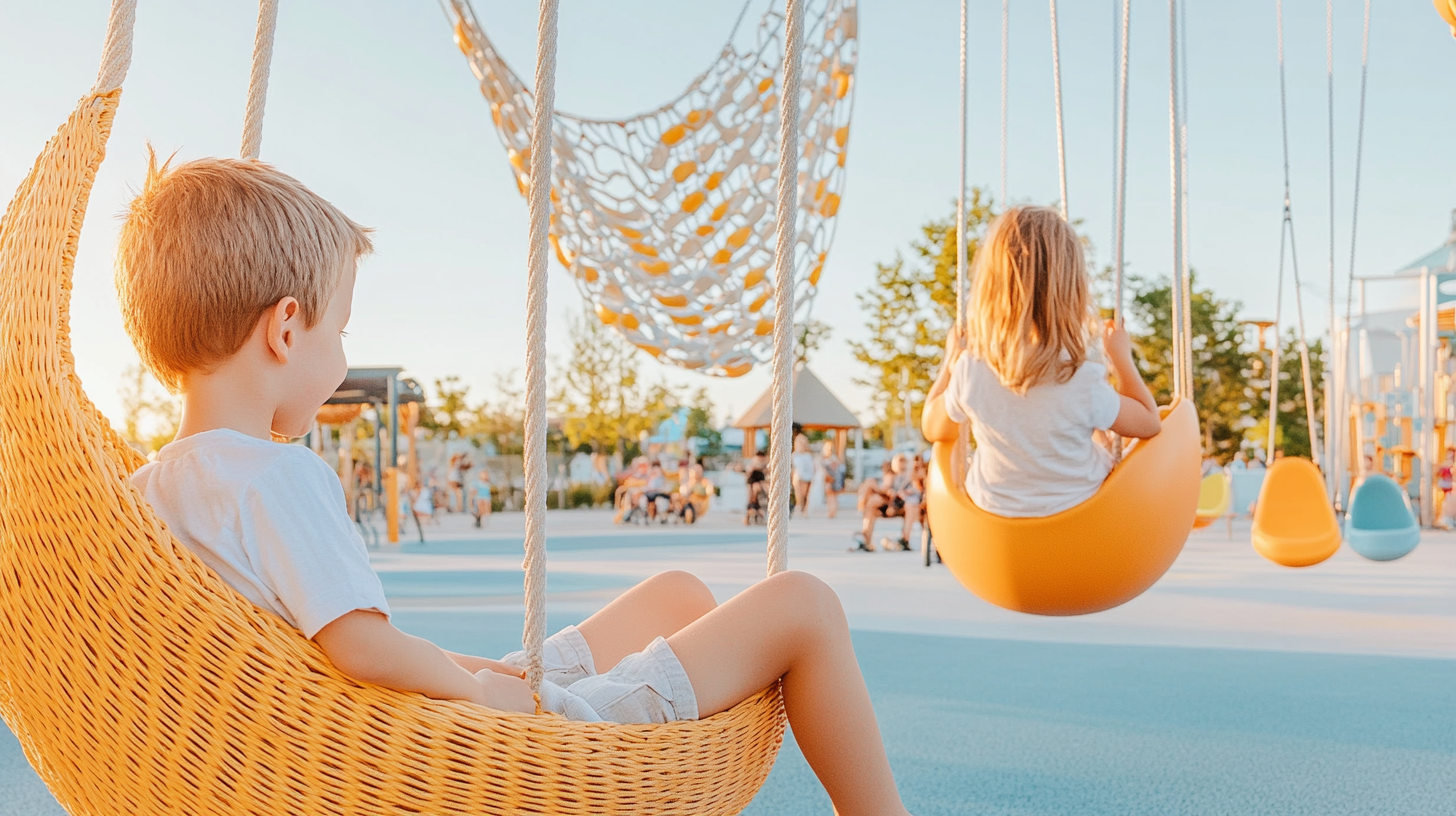
Building Inclusive Playgrounds & How Accessible Play Spaces Benefit Children with Disabilities
Play is a fundamental part of childhood, providing opportunities for physical, social, and cognitive development. For children with disabilities, however, many traditional playgrounds present barriers that prevent them from fully participating in the fun. Inclusive playgrounds are designed to accommodate children of all abilities, ensuring that everyone can enjoy safe, accessible play. In this blog, we’ll explore how building inclusive playgrounds benefits children with disabilities and why accessible play spaces are essential in creating more equitable and inclusive communities.
What Are Inclusive Playgrounds?
Defining Inclusive Play
An inclusive playground is designed to provide accessible play opportunities for all children, regardless of their physical, sensory, or cognitive abilities. These playgrounds incorporate equipment, surfacing, and design elements that allow children with disabilities to navigate the space easily, interact with peers, and participate in activities that foster development and socialization.
Key features of inclusive playgrounds often include:
- Accessible pathways and ramps: Ensuring that children who use wheelchairs or mobility devices can access all areas of the playground.
- Adaptive swings and sensory play equipment: Providing alternative play experiences for children with sensory sensitivities or mobility challenges.
- Tactile play elements: Stimulating sensory engagement through different textures and materials for children with sensory processing disorders.
Legal Requirements for Accessibility
The Americans with Disabilities Act (ADA) sets forth standards for accessible design, including playgrounds. According to the ADA, public playgrounds must have accessible routes, ground-level play components, and inclusive equipment that can be used by children with disabilities. In New Jersey, local communities and organizations work to ensure that playgrounds meet these standards, creating spaces where all children can play side by side.
How Accessible Play Spaces Benefit Children with Disabilities
1. Physical Development
Accessible playgrounds encourage physical activity, helping children with disabilities develop strength, balance, and coordination. Equipment such as adaptive swings, wheelchair-accessible merry-go-rounds, and climbing structures designed for children with mobility issues provide opportunities for physical exercise and motor skill development. This is especially important for children with disabilities who may have fewer opportunities for physical activity in other areas of their lives.
For example, Easterseals New Jersey advocates for the importance of physical activity for children with disabilities, and accessible playgrounds provide a safe space for children to engage in healthy movement.
2. Social Inclusion and Interaction
Playgrounds are natural spaces for socialization, where children can interact, cooperate, and build friendships. For children with disabilities, inclusive playgrounds create opportunities to engage with their peers in a meaningful way, fostering a sense of belonging and community. By playing together, children with and without disabilities learn to appreciate and celebrate differences, helping to break down social barriers.
The Arc of New Jersey promotes inclusive environments that support the social and emotional development of children with disabilities. Inclusive playgrounds offer a perfect example of how communities can bring children together through shared play experiences.
3. Cognitive and Sensory Stimulation
Inclusive playgrounds often incorporate sensory elements such as tactile panels, musical instruments, and water features that engage children’s senses and support cognitive development. These elements are particularly beneficial for children with autism or sensory processing disorders, as they provide a controlled environment where children can explore different sensations and learn to manage sensory input.
For children with cognitive disabilities, play equipment designed with clear visual cues and simple interactive features can help improve attention span, problem-solving skills, and memory. The inclusive design ensures that these learning experiences are accessible to all children.
4. Fostering Independence
By providing accessible play equipment and design, inclusive playgrounds empower children with disabilities to play independently. Features such as ramps, low-to-the-ground play structures, and wide walkways allow children to navigate the space without relying on assistance from caregivers, boosting their confidence and self-esteem.
Inclusive Playgrounds in New Jersey
In New Jersey, communities are increasingly recognizing the importance of building inclusive playgrounds. Organizations like Shane’s Inspiration work with cities and local governments to develop inclusive play spaces that meet the needs of all children, including those with disabilities. Several towns, including Westfield, NJ, have implemented inclusive playground projects, providing accessible recreational opportunities for families.
Boundless Playgrounds, another organization advocating for inclusive play, has helped design accessible playgrounds across the U.S., including New Jersey, where communities have embraced the idea of creating spaces where every child can play without barriers.
The Importance of Building Inclusive Playgrounds
Inclusive playgrounds are more than just spaces for recreation—they are essential environments for learning, socialization, and development for children with disabilities. By ensuring that playgrounds are accessible to all children, communities can foster greater inclusion and provide meaningful opportunities for physical, social, and cognitive growth. As more inclusive playgrounds are built across New Jersey, families and children with disabilities will continue to benefit from these innovative, welcoming play spaces.
For more information on building inclusive playgrounds in your community, visit Easterseals New Jersey or The Arc of New Jersey to explore local resources and advocacy efforts.





